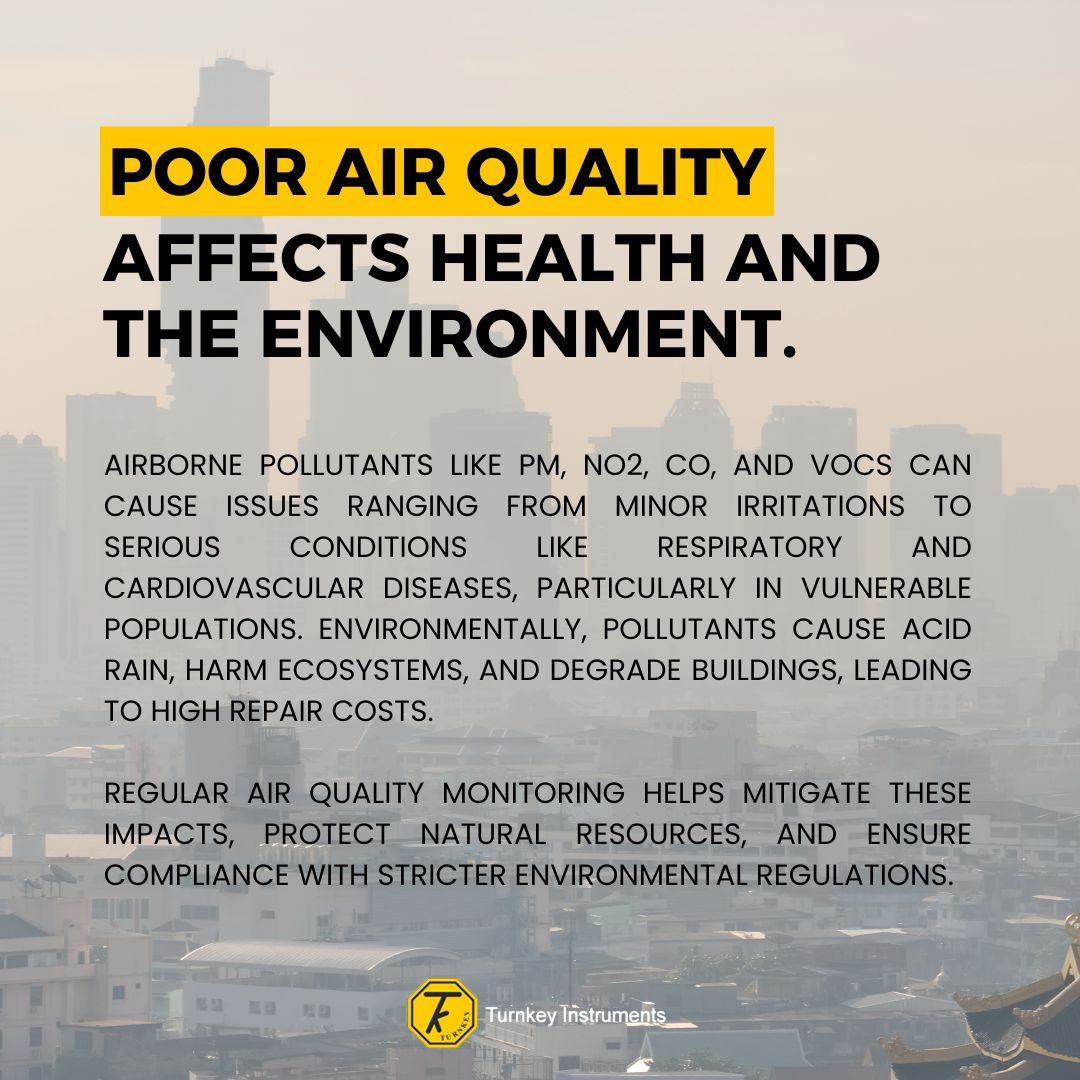- Micah
- 0 Comments
The Impact of Poor Air Quality and How to Improve It
Air quality plays a critical role in our health and well-being, yet many urban and industrial areas suffer from poor air quality, leading to a range of health problems. Air pollution, caused by vehicle emissions, industrial activities, and other environmental factors, can contribute to respiratory issues, cardiovascular diseases, and even early death. With rising pollution levels worldwide, it’s essential to understand how poor air quality impacts us, how we can monitor it and what we can do to improve it.
The Consequences of Poor Air Quality
When air quality is compromised, harmful particles like nitrogen dioxide (NO2), sulfur dioxide (SO2), ozone (O3), and particulate matter (PM) can become airborne. These pollutants irritate the lungs, leading to asthma, bronchitis, and other respiratory illnesses. Long-term exposure has been linked to cardiovascular problems, increased mortality rates, and weakened immune systems.
Vulnerable groups, including children, the elderly, and those with pre-existing health conditions, are especially at risk. Furthermore, poor air quality can have detrimental effects on the environment, harming plants, animals, and ecosystems.
Ways to Improve Air Quality
-
Reduce Vehicle Emissions
One of the largest contributors to air pollution is transportation. Opting for public transit, biking, walking, or electric vehicles (EVs) can significantly cut down on emissions. Additionally, carpooling or sharing rides can help reduce the number of vehicles on the road. -
Support Clean Energy
Switching to renewable energy sources like solar, wind, and hydropower can reduce dependence on fossil fuels, which are major polluters. Individuals can also choose green energy plans provided by their local utilities. -
Implementing Stricter Regulations
Governments play a crucial role in improving air quality by enacting and enforcing environmental policies. This includes regulations on industrial emissions, waste disposal, and vehicle emissions standards. -
Plant More Trees
Trees and plants naturally absorb carbon dioxide and release oxygen, improving air quality. Urban green spaces, community gardens, and local tree-planting initiatives can help offset pollution in cities. -
Use Air Purifiers
For indoor air quality, using air purifiers with HEPA filters can help remove pollutants and allergens. Additionally, reducing the use of chemicals in cleaning products and promoting good ventilation can improve air quality inside homes and offices. -
Conserve Energy
Reducing energy consumption through simple actions—such as turning off lights when not in use, using energy-efficient appliances, and reducing heating and cooling demands—can indirectly help cut down on pollution from power plants.
Conclusion
Poor air quality is an urgent issue that affects both our health and the environment. By monitoring air quality at critical receptors and taking actions, then advocating for change, and supporting green technologies, we can all play a part in reducing pollution and improving air quality. With collective effort, cleaner, healthier air is within reach for everyone.

